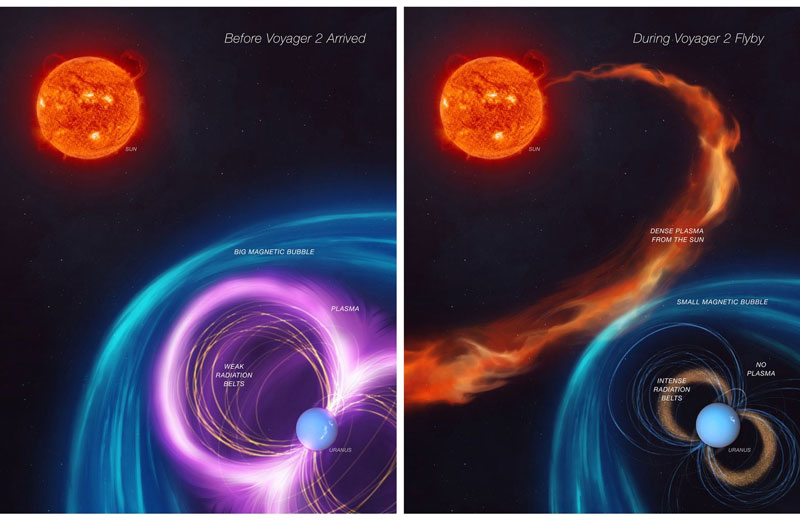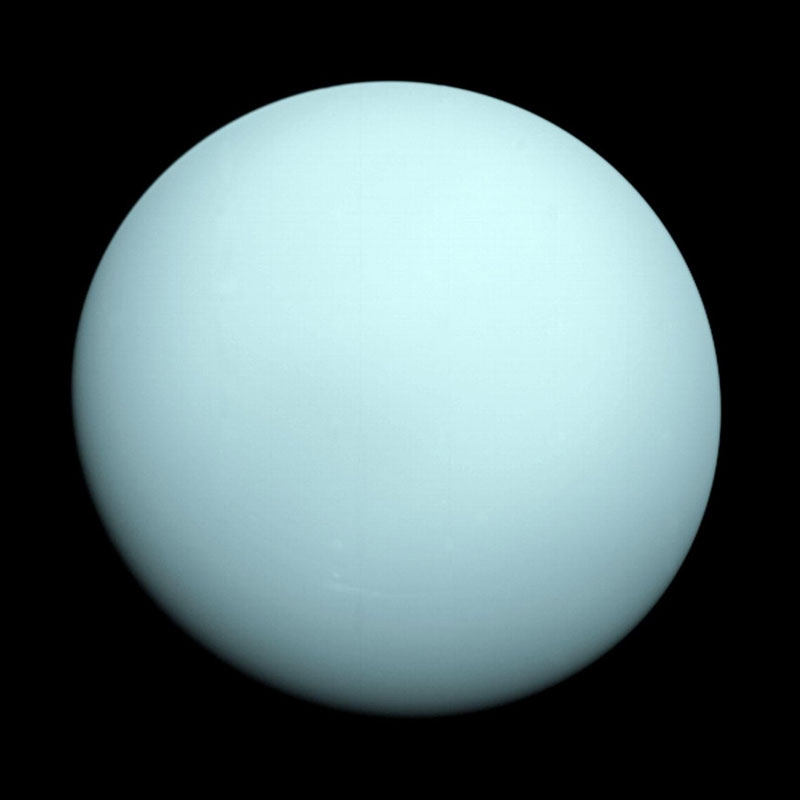In 1986, NASA’s Voyager 2 probe flew past Uranus, the distant seventh planet in the solar system. During the flyby, he took a picture of the planet’s magnetosphere, the decoding of which puzzled scientists. The configuration of Uranus’s magnetosphere turned out to be so unexpected that there was no clear scientific explanation for it. A new study of Voyager 2 archival data has helped us understand this puzzle.

On the left is the normal state of the magnetosphere of Uranus, on the right is under the influence of the solar wind. Image source: NASA
The magnetosphere of planets protects them from the flow of cosmic particles and solar particles – plasma or solar wind. This, in particular, leads to the formation of weak radiation belts around the planets, in which high-energy particles accumulate, like in virtual donuts. This belt around the Earth is called the Van Allen Belt. From the data obtained 38 years ago by Voyager 2, it followed that Uranus has a highly compressed magnetosphere, devoid of plasma, and a powerful radiation belt, which in terms of radiation intensity was second only to the belts of Jupiter. This simply could not happen.
A new study of the probe’s archival data has finally revealed the reason for this discrepancy. It turned out that it was a rare coincidence of circumstances. The magnetosphere of Uranus is in the state recorded by the probe only about 4% of the time, and Voyager 2 was lucky (or unlucky) to fly past the planet during this rare period of time. The rest of the time, the magnetosphere of Uranus is “normal”, and its dynamics are not much different from the dynamics of the magnetosphere, for example, of the Earth.

Uranium in natural colors. 1986 image from Voyager 2
A few days before the flyby of Uranus, the planet was exposed to massive solar wind. Solar plasma greatly compressed Uranus’ magnetosphere and radiation belts, and also displaced local plasma – water ions emitted by the planet’s moons. By the way, the lack of data on local plasma in the Voyager 2 records led scientists to assume that all five of the nearest moons of Uranus are geologically dead. However, now there is an opportunity to refute this statement. The probe simply flew past the planet at the wrong time. This is good news for planetary scientists – the Uranian system, as it turns out, has a lot of interesting things, and the planet is waiting for its discoverers.